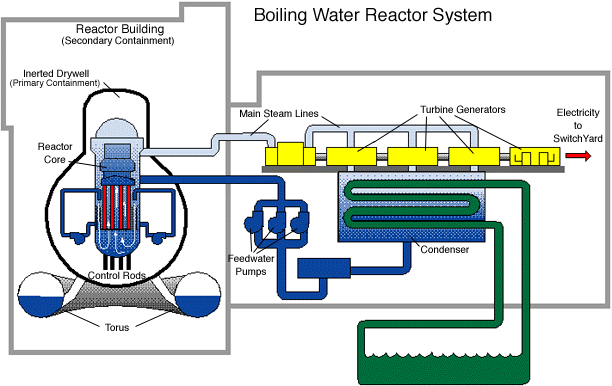Wow, I hadn't heard anything about the oxygen controversy until you pointed it out. I can confirm that ridiculous rumours are rampant out there, and I can't afford the time to disprove them all. But here's some basic reality checks that should help:
1) Radiolysis routinely produces both hydrogen and oxygen in normal reactor operation. Recombiners dispose of the radiolysis products by turning them back into water. Radiolysis will continue at a reduced rate when the reactor is shut down, but recombiners may not work (or lose efficiency) if they don't have electrical power.
2) If the core overheats, the zirconium-water reaction may produce hydrogen and zirconium oxide, (and maybe some form of hydroxide?) but no oxygen. The recombiners are no help if they don't have enough oxygen to react with the hydrogen.
3) In a meltdown scenario, you could have hydrogen production from both of the above sources. The flammability and explosive bands for hydrogen and oxygen are impressively wide, buy the energy output tends to be weaker at the edges of the bands than for a perfect stochiometric mix.
4) You can't rule out an explosion inside the reactor pressure vessel. It didn't happen in Three Mile Island, but I know of two other reactors where it did. Those cases were relatively innocuous pops relative to the vessel strength. They bent some attached piping and cracked supports, but the vessel itself didn't seem to notice.
The next three points are educated guesswork, not be trusted.
5) The venting procedures are unclear to me, but it appears that some RPV coolant was vented to primary containment. I'm told that there are some pneumatic actuators inside their primary containment, and I'm guessing they run on air. So the pneumatic exhaust becomes an additional source of oxygen, raising the risk and potential power of the explosion, inside a significantly weaker vessel.
6) I can't make much sense of the secondary containment design, i.e. the reactor building, except as a collector of fugitive emissions and holding tank for the filters and exhaust stack. Therefore I presume that any vent to atmosphere, either from the RPV or from primary containment, is supposed to go through secondary containment. That would reduce the flow rate through the filters and increase their effectiveness, but it means mixing the hydrogen with a lot of air. Going out on a limb, I would guess that the refuelling deck was meant to be frangible in the event of overpressure.
7) Someone eventually got the idea to cut vent holes in secondary containment of unit 2, 5, and 6 to improve hydrogen venting. You can see these square holes in the walls on some pictures. Those three units now look much better from the outside than 1, 2, and 4, so somebody deserves a raise.
The last three points are not necessarily true, but they at least give a plausible alternative to some of zany conspiracies you can Google.
Having said all that, the hydrogen explosion are still puzzling to the best nuclear chemists I work with. As best as we can figure out, any plant should normally have enough recombiner and igniter capacity within containment to handle this accident scenario. So why didn't they work? Were they broken or blocked? Was the hydrogen production or venting far higher than our estimates? Did someone plug them into a regular outlet instead of one that was protected by the back-up battery system? Was this just another effect of the extended station blackout? We'll have to wait for the lessons learned report years hence to get complete answers.

